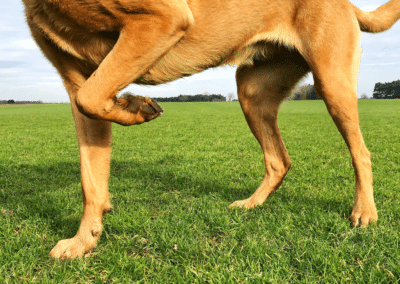Summer is upon us which means it’s time to remember how dangerous the heat and humidity can be for our furry friends. Leaving canines in cars, walking dogs on hot pavement, or leaving them outdoors without access to water can lead to extreme heat stroke in dogs.
Dogs have higher body temperatures than we do. They cannot release heat efficiently due to the absence of sweat glands, except in their nose and foot pads. Panting is the primary way they shed excess body heat, which makes them prime targets for overheating, dehydration, and heat stroke.
Take a look at these surprising facts about heat stroke in dogs:
- When the outside temperature reaches 75 degrees, asphalt roads and sidewalks are 125 degrees. At 125 degrees the destruction of a dog’s foot pads begins within the first 60 seconds of a walk.
- It only takes about ten minutes for a car’s interior to reach 100 plus degrees when the outside temperature reaches 85. In 30 minutes car temperatures can get as high as 125 degrees.
Imagine how fast problems can occur when air temperatures climb into the 90’s or 100’s! If you add in excessive humidity, these numbers increase even more, and leaving the car windows cracked DOES NOT help.
Puppies and kittens, senior pets, those with chronic health conditions, heavily coated breeds, brachycephalic (short nosed breeds), and pets that tend to overexert themselves are especially sensitive to heat stroke.
Warning Signs
What should you look for to determine if your pet is overheating or dehydrated?
- excessive panting
- drooling
- rapid noisy breathing
- glazed eyes
- vomiting
- diarrhea
- elevated temperature
- increased heartbeat
- bright or dark red tongue and gums
- staggering
- weakness
- collapsing
- convulsing
- seizures
- unconsciousness
When a dog becomes dehydrated, signs include sunken eyes, dry nose, mouth and gums. The skin eventually loses its elasticity. Normally, you can pull up on the skin on the back of your dog’s neck and the skin will snap back. When dehydrated, it takes much longer for the skin to return. The more time it takes the more severely dehydrated your canine is.
When your pet demonstrates any of the above signs, you should wet them down with cool tap water and then immediately seek veterinary assistance. Overheating can quickly become a life-threatening situation, leading to heat stroke and cardiac arrhythmias in dogs. Dehydration unbalances the body’s electrolytes and can rapidly cause the kidneys to shut down. Both situations require immediate intervention and veterinary treatment.
Stay Cool
So how do we protect our furry friends during the hot summer months? Outdoor animals should be provided shade and fresh water at all times. Give your long-haired pet a summer cut. (But not too short, as the coat protects them from sunburn!) Walk your dog early in the morning or after the sun goes down. Paw Wax or doggy boots can be used to protect the foot pads; however, they should be removed after the walk since dogs perspire through their foot pads. Finally, NEVER leave a pet unattended in a car during the summer months. By following these guidelines, you and your pets can have a fun and safe summer!









0 Comments